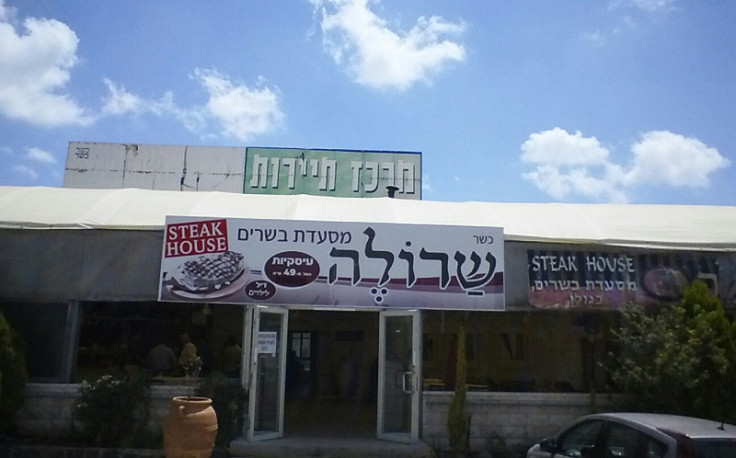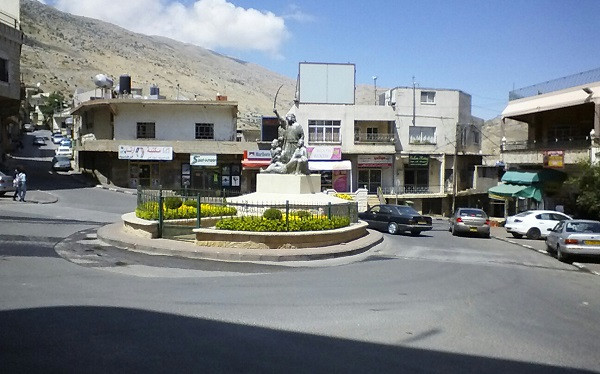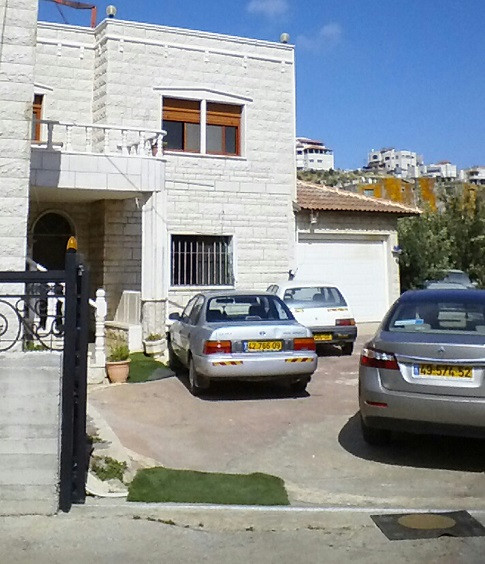Life In the Golan Heights: How Ordinary People Learn to Prosper in a Crucible of Hate

When you consider the history of the Golan Heights, it's hard to imagine any sort of society surviving there. This rugged, rocky strip straddling the border of Israel and Syria has been a crucible of conflict for centuries; it was even mentioned as a scene of turmoil in the Bible.
Conquered by the Arabs in the seventh century and the Ottomans in the 16th, it was controlled first by France and then Syria during the early 20th century, before the majority was captured by Israel during the bloody Six-Day War of 1967.
Today the Syrian civil war rages just miles away, and Israeli media claim Hezbollah are opening up a new front in the region. Someone with no knowledge of the area would imagine it barren and desolate, a buffer zone bubbling with fear and hostility.
Yet, like the trees and flowers that proliferate on the craggy mountains, a vibrant society has defied the odds and taken root on the Israeli side. This feat is even more remarkable given the ethnic complexity of the community.
Jews live side-by-side under the Israeli flag with Christians and members of the Syrian Druze sect, whose faith contains elements of Judaism, Christianity and Islam. It sounds like a recipe for tumult, especially given the Syrian civil war is raging just miles away. Yet these days the Golan Heights is far less turbulent than other border areas, and certainly far more peaceful than other flashpoint areas such as the Gaza Strip.
Today, along with a handful of journalists from the English broadsheets, I have the chance to witness this minor miracle for myself. We have been invited by a former IDF commander to take a tour of the Heights, and to meet two members of the local community in a valley below Castle Nimrod, a medieval Crusader fortress which is now the centrepiece of a national park that bears its name. This is the sort of assignment that made us want to become ournalists in the first place.
We arrive at a roadside restaurant whose layout is, frankly, unremarkable, with its white breezeblock façades, faded signage and wooden tables. It´s the sort of restaurant you find anywhere in the Middle East and it stands completely alone, accessible only by a road snaking up the mountainside. It's quiet, almost eerily so. Yet at the top of the mountain we can clearly see the ruined fortress glowering down at us – a reminder that the area wasn't always this calm.

The two locals introduce themselves as Guy, a 33-year-old quantum mechanics student who lives in a kibbutz in the nearby town of Snir, and Taleah, a 47-year-old teacher who lives a few miles away in the Druze community. Both men speak excellent English and are immediately relaxed in our company. Yet, inevitably, the conversation soon drifts to the turbulent history of the land they call home.
Of the past conflict, Guy says: "All my life I felt it. As children we saw the army all the time, the border wasn´t so quiet as it is now, we could hear the gunfire, helicopters all around, it's something you live with, and all the time we think about it. We don´t live in fear, but in a state of post-trauma. We hear about Syrians coming over the border all the time to escape the fighting, and the war in Syria is obviously close, even if you don't see it."
As children we saw the army all the time, the border wasn´t so quiet as it is now
Taleah, meanwhile, recalls his father telling him that an Israeli soldier took him home and put him in shelter during a bombing raid in the 1973 war, when Syria attacked the Heights. Like Guy, he says he doesn't really feel the Syrian civil war, which seems remarkable given there have been "one of two" bombings nearby, and shelters are dotted around his village. Across the border, 120,000 Syrian Druze have been forced to flee their land for Europe and America, driven out by the ferocity of the conflict and the possibility of persecution by the hard-line Islamist rebels.
It is immediately clear that Taleah is fiercely proud of his sect. He wastes no time in telling us that our lunch of falafel, kebab and maklava rice is "typical Druze food", and claims he sees himself as Druze rather than any particular nationality. Yet despite his religious devotion, and the fact that Arabic is his first language, he shows a clear affinity for Israel, referring to its people as "our brothers."
Ten percent of his local community are Israeli and, although there is some pro-Syrian sentiment, the majority of the rest identify with the Jewish state; many serve in the IDF, and according to Taleah, "are more motivated than the Jews themselves".
There are many reasons for this sense of kinship. Taleah claims it dates back to the biblical prophet Jethro, who helped the Israelites escape Egypt and is also revered in the Druze religion. Yet he also says Druze believe it is vital to show loyalty to the country they live in – a tenet perhaps born of the instability that has scarred their region, and a pragmatic need to adapt. And, of course, there is a common enemy. "We and the Alawites in Syria are afraid of the Sunnis," Taleah says. "Our brothers here in Israel are afraid, too."
We and the Alawites in Syria are afraid of the Sunnis. Our brothers here in Israel are afraid, too.
We finish lunch and Guy has to leave. Taleah, however, refuses to end it here; he is determined to show us his community and give us some Druze hospitality, so we pile into his car for the 30-minute drive to his home. Taleah reveals he is the sixth generation of a Druze sheikh, and gives us an effusive overview of his people.
He claims that the majority are plant eaters – "they like land, they have a close relationship with the land" - and education is highly prized, with a high percentage going to university.
"All the parents here want their children to speak English. We have special respect for the English people, not because you yourself are English but in London they have respect, civilisation and culture." The women dress in clothes not dissimilar to a Muslim burqa, black with a white shawl, yet there are no restrictions on what young girls can wear, and women have been able to drive for 30 years.

We pass through Majdal Shams, an affluent town with shops advertising western clothes and signs in English, Hebrew and Arabic, before stopping at "Shouting Hill", a small ridge crossed by the Syria border fence. Following the partition of the Druze community in 1967, those separated by the towering fence would meet at this hill to bond, gossip and even flirt over the barbed wire.
Today, however, an Assad stronghold sits on the Syrian side and any interaction across the divide would be highly risky; families torn asunder by the 1967 partition have little chance of seeing each other.
Then it's on to one of the many cherry orchards which, Taleah says, are integral to the local economy, and then eventually we arrive at Taleah's house, a modern two-storey stone building in a small, remote village. Like many houses here, the property is flanked by a fleet of cars, proof that the area has remained prosperous and vibrant despite the conflict close by.

Taleah's wife and one of his sons greet us with cakes, fruit, coffee and tea, although in truth we are still completely full from lunch, and the vast majority of the food is still untouched when our guide ushers us out, after just a few minutes of general chit-chat. Our host doesn't seem to mind; he is proud to have given us a glimpse of his life, of his people, and of the warm kernel of hope which has enabled this amazing community to survive in the most unforgiving of circumstances.
© Copyright IBTimes 2025. All rights reserved.




















